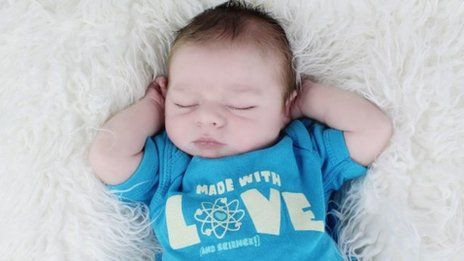Connor Levy Is First Baby Born Using New IVF Genetic Screening; ‘Designer Babies’ Still Far Down The Road

The first baby to have been conceived via new methods of in vitro fertilization (IVF) was born to a Philadelphia couple a little over a month ago.
The process comes as the latest advance in next generation sequencing (NGS), which allows doctors to read every letter on the human genome and find abnormalities in each embryo to best select the one for fertilization.
Connor Levy, born May 18 to parents David Levy and Marybeth Scheidts, began his life as one of three embryos that Dr. Dagan Wells, a fertility specialist at Oxford University, selected from the couple's 13 fertilized embryos. Because of the advances in NGS, Wells was able to examine each component of the embryo's chromosomes for abnormalities and deduce which embryos would result in a normal birth.
Scheidts, 36, and Levy, 41, had tried artificial insemination three times unsuccessfully before signing up for IVF at Main Line Fertility clinic in Pennsylvania. Wells selected the couple as part of an international study on NGS to test their chromosomes for abnormalities.
Because she is in her thirties, Scheidts' chance of producing an abnormal embryo is one-third. By the time women reach their forties, that chance rises to 75 percent. Embryos with abnormal chromosomes typically fail to implant in the womb, but those that do often end up in miscarriage. In the rare cases they go to term, the embryos most often result in genetic disorders, such as Down syndrome or Turner syndrome.
The newest advances in NGS allow doctors to find these abnormalities immediately and pluck the healthiest embryos for use.
"It can't make embryos better than they were in the beginning, but it can guide us to the best ones," said Wells, who noted that the falling cost of the sequencing will hopefully let doctors read the entire DNA. To produce Scheidts' embryo, scientists looked only at the chromosomes.
After much emotional turmoil, Scheidts says that she is happy the advances opened so many doors for her family. The other two normal embryos have been kept in cold storage.
"I think it saved us a lot of heartache," Scheidts told the Guardian. "My insurance covered me for three cycles of IVF. We might have gone through all three without the doctors picking the right embryos. I would not have a baby now."
Dr. Michael Glassner, who worked with Levy and Scheidts at the Main Line Fertility clinic, called the procedure revolutionary.
"This increases pregnancy rates by 50% across the board and reduces miscarriages by a similar margin," he said. "It will be much less expensive. In five years, this will be state of the art and everyone who comes for IVF will have it."
Glassner does not mean to imply that couples will soon be able to "design" their babies at will. Britain currently bans doctors from choosing embryos except in cases of serious medical necessity.
"You can start to have a very scary picture painted if you talk about height and hair color and so on," said Glassner. "We have to make sure this is used judiciously."
IVF only produces a dozen or so embryos at best, so the process doesn't show signs of widespread practice. As it improves, and the costs come down, Glassner believes the process of screening chromosomes for abnormalities — essentially taking the luck of IVF out of the equation — will cause the practice to become more widespread.
"If you have ever sat across the desk from a patient that has failed or is in that crossroads of thinking of another cycle and you look in their eyes where they are barely able to hold on to their hopes and dreams," he said, "anything that is so significantly going to impact pregnancy rates is going to become standard."



























